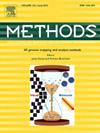通过CRISPR/Cas9缺口酶介导的串联配对缺口实现靶向敲入的特性
IF 4.3
3区 生物学
Q1 BIOCHEMICAL RESEARCH METHODS
引用次数: 0
摘要
使用CRISPR/Cas9靶向敲入特定的DNA序列是一项先进的技术,可以完全按照设计实现程序化的基因组改变,包括插入、缺失和碱基替换。尽管该技术在生命科学领域具有实用性,并有望在医疗和工业领域得到应用,但为促进该技术的实际应用,建立一种高度精确和高效的定向敲入方法仍然至关重要。串联配对缺口(TPN)是一种利用CRISPR/Cas9核酸酶(Cas9缺口酶)的缺口变体在基因组和供体DNA的同源区域内创建位点特异性缺口的基因组编辑方法。这种缺口结构促进精确和有效的靶向敲入,同时抑制意外插入和缺失的形成以及p53介导的DNA损伤反应。在这项研究中,我们通过使用由TPN修饰的各种缺口结构进行基因组编辑分析,对基于TPN的靶向敲入进行了详细的表征。我们的研究结果表明,基因组缺口显著地促进了基于tpn的靶向敲入,而供体缺口的作用则不那么关键。在标准的双切口配置之外引入额外的切口并没有进一步提高基于tpn的靶向敲入的效率。与其他基于Cas9镍酶的靶向敲入方法的比较表明,这些方法在很大程度上实现了相同的敲入效率。与传统的基于Cas9核酸酶的方法相比,高通量长读测序证实,TPN的各种长度的非期望插入和缺失发生率较低。这些发现强调了TPN作为一种精确和有效的靶向敲入方法,并强调了基于Cas9镍酶的靶向敲入在临床和工业应用中的广泛潜力。本文章由计算机程序翻译,如有差异,请以英文原文为准。
Characterization of targeted knock-in achieved via tandem paired nicking mediated by CRISPR/Cas9 nickases
Targeted knock-in of specific DNA sequences using CRISPR/Cas9 is an advanced technology that enables programmed genome alterations including insertions, deletions, and base substitutions exactly as designed. Despite its utility in life sciences and promise for medical and industrial applications, it remains critical to establish a methodology for highly precise and efficient targeted knock-in to facilitate the practical use of this technology. Tandem paired nicking (TPN) is a genome editing methodology leveraging nicking variants of CRISPR/Cas9 nucleases (Cas9 nickases) to create site-specific nicks within the homologous region of the genome and donor DNA. Such nicking configuration promotes precise and efficient targeted knock-in while repressing the formation of unintended insertions and deletions and p53-mediated DNA damage response. In this study, we conducted a detailed characterization of TPN-based targeted knock-in by performing genome editing assays with various nicking configurations modified from TPN. Our results demonstrated that genomic nicks remarkably contribute to TPN-based targeted knock-in, whereas donor nicks play a less critical role. The introduction of additional nicks beyond the standard two-nick configuration did not further improve the efficiency of TPN-based targeted knock-in. Comparison with other Cas9 nickase-based methodologies for targeted knock-in demonstrated largely equivalent knock-in efficiencies achieved by these methodologies. High-throughput long-read sequencing confirmed a lower incidence of undesired insertions and deletions of various lengths by TPN, in comparison with a conventional Cas9 nuclease-based approach. These findings underscore TPN as a methodology for precise and efficient targeted knock-in, and highlight the broad potential of Cas9 nickase-based targeted knock-in for clinical and industrial applications.
求助全文
通过发布文献求助,成功后即可免费获取论文全文。
去求助
来源期刊

Methods
生物-生化研究方法
CiteScore
9.80
自引率
2.10%
发文量
222
审稿时长
11.3 weeks
期刊介绍:
Methods focuses on rapidly developing techniques in the experimental biological and medical sciences.
Each topical issue, organized by a guest editor who is an expert in the area covered, consists solely of invited quality articles by specialist authors, many of them reviews. Issues are devoted to specific technical approaches with emphasis on clear detailed descriptions of protocols that allow them to be reproduced easily. The background information provided enables researchers to understand the principles underlying the methods; other helpful sections include comparisons of alternative methods giving the advantages and disadvantages of particular methods, guidance on avoiding potential pitfalls, and suggestions for troubleshooting.
 求助内容:
求助内容: 应助结果提醒方式:
应助结果提醒方式:


